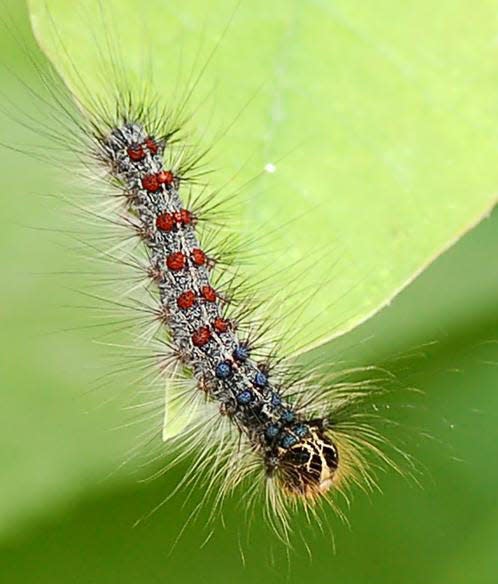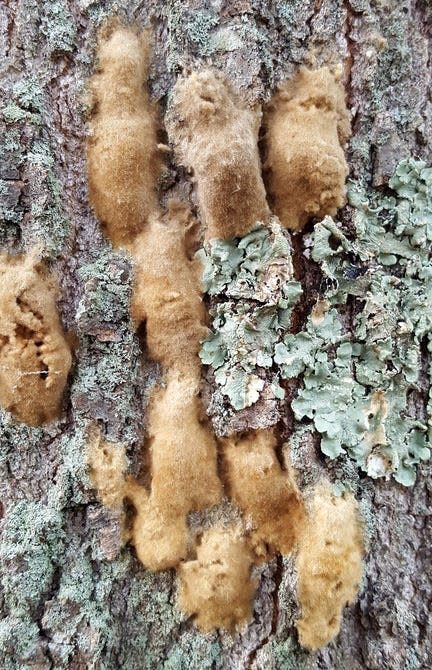'Spongy moths' may have established foothold in Kentucky
As recently as last year, the gypsy moth was officially renamed the spongy moth.
The spongy moth was accidentally introduced in Medford, Massachusetts, in 1869. Spongy moth larvae were being evaluated for silk production when they were blown from a windowsill.
By 1987, the spongy moth had established itself throughout the Northeast. Defoliating a million or more acres annually, the spongy moth is one of the most damaging pests of urban landscapes and hardwood forests. Spongy moth caterpillars prefer feeding on oak tress but will resort to destroying apple, sweetgum, basswood, willow, birch, or poplar trees.
Identification
At the end of their seven-week growing period, spongy moth caterpillars will be approximately two inches long. They can be identified by their five pairs of blue dots and six pairs of red dots that run along their back.
Spongy moth caterpillars are also very hairy. When developed into their final growth stage, female and male spongy moths look very different. Female spongy moths are tan to white in color and nearly two inches in size. Female spongy moths are also not capable of flying.

Male spongy moths are brown in color and approximately three-quarters of an inch in size with fuzzy antennae; they are capable of flying.
Monitor and control
The state of Kentucky is surrounded by regulated, infested areas in Virginia, West Virginia, Ohio, Indiana, and Tennessee.
The possibility of spongy moths spreading into Kentucky is extremely high due to the popularity of Kentucky’s recreational areas. We have been surveying and monitoring for this pest since 1983 and have been successful. Spongy moth traps are easy to assemble and can be set by members of the community.
It may be easier to destroy egg masses that are found on buildings, trees, etc. Egg masses hold approximately 1,000 eggs and are a tan to white color. To destroy an egg mass, either crush the eggs or place them in a bucket of soapy water. Placing burlap around tree trunks, especially oaks, will provide a hiding place for older spongy moths and can provide an easy way to monitor the population.
This summer, the Henderson County Extension Office held a spongy moth program composed of 4-H members and Master Gardeners. We set 10 traps around the county in late May. These traps are baited with a synthetic female sex pheromone strip to attract and capture male spongy moths. It is easier to trap male spongy moths due to their flying capability.

When setting our traps, we used the Survey123 app to log our data and GPS track our delta traps. We set, checked, and collected our traps during the months of May to August. All the data collected was sent back to the University of Kentucky.
Our data is used to determine if spongy moths have established in Kentucky.
Alyssa Vandiver is the University of Kentucky Extension Intern for Horticulture and Agriculture at the Henderson County Extension Office. You can reach her by email at amva269@uky.edu.
This article originally appeared on Henderson Gleaner: 'Spongy moths' may have established foothold in Kentucky
